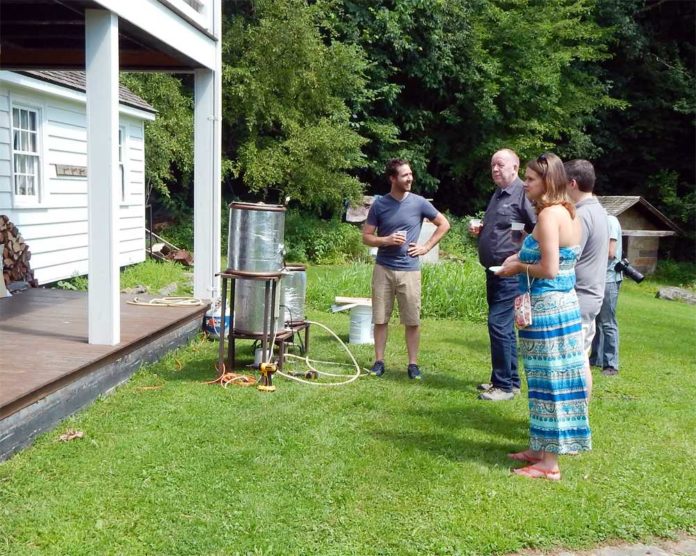The curator of the Old Stone House is holding a program on Saturday, April 11 at 3 p.m. that will explore how history affected how people brewed beer, and includes a tasting of beers brewed according to 18th and 19th century recipes.
The “Homebrewed History: Beers of the British Empire” program requires a pre-registration, which can be done on the Old Stone House’s website, and costs $25 per person. All participants must also be 21 and older.
This is the second year the program has been held at the Old Stone House, and curator Dr. Aaron Cowan said that “Homebrewed History” brings new people to the museum who otherwise wouldn’t visit it, and it especially attracts home-brewers.
“Beer is a tangible way to connect people to the past,” Cowan said. “Everything we enjoy today has a history behind it.”
Metalsmithing professor Sean Macmillan will be brewing both Porter and Indiana Pale Ale (IPA) for “Homebrewed History,” a hobby that he picked up seven years ago.
He said that home-brewers in particular connect to the history behind the different types of beer. Porter beer, he said, was named for the people called the porters who hauled things across the city. The beer is darker, and has a more robust flavor than IPAs, which were developed to withstand that hot environment of India so that the British people living there could drink it.
“My favorite part of brewing for this is that it gives me the opportunity to do in-depth research on different recipes and brewing methods,” Macmillan said.
The process of brewing each vat of beer takes several hours, and Macmillan said the difference between the different types of beer is similar to the difference between angel food cake and cheesecake, one is lighter in texture, and one is heavier and more robust in flavor.
He said that the difference in making the two beers is in how long the grain is roasted, and how prevalent the flavor of hops is in the beer. The grain in Porter is roasted for a longer amount of time, and the taste of hops is less prevalent.
He also said that participants’ preference between the beers is as varied as the participants are.
“With the bleak weather we’ve been having lately, I prefer porter,” Macmillan said, “but IPA was made to withstand the heat, so it’s really refreshing to drink in the summertime.”
Dr. Lia Paradis will also give a presentation on how the expansion of the British Empire affected brewing techniques and consumer tastes. Cowan said that people enjoy the presentation because it makes the significance of beer throughout history more relatable.
In the other times the Old Stone House hosted the program, Cowan said that they sold out one event, and almost sold out the other. He also said that the proceeds go into maintaining the Old Stone House, and hosting other programs like “Homebrewed History.”
“The best part about a program like this is that it’s a nontraditional story on how culture and food intersect, and how everything we enjoy today is shaped by external factors,” Cowan said.









Its wrong to hold that there not right
I think I will be getting a ticket to this one, missed last years!